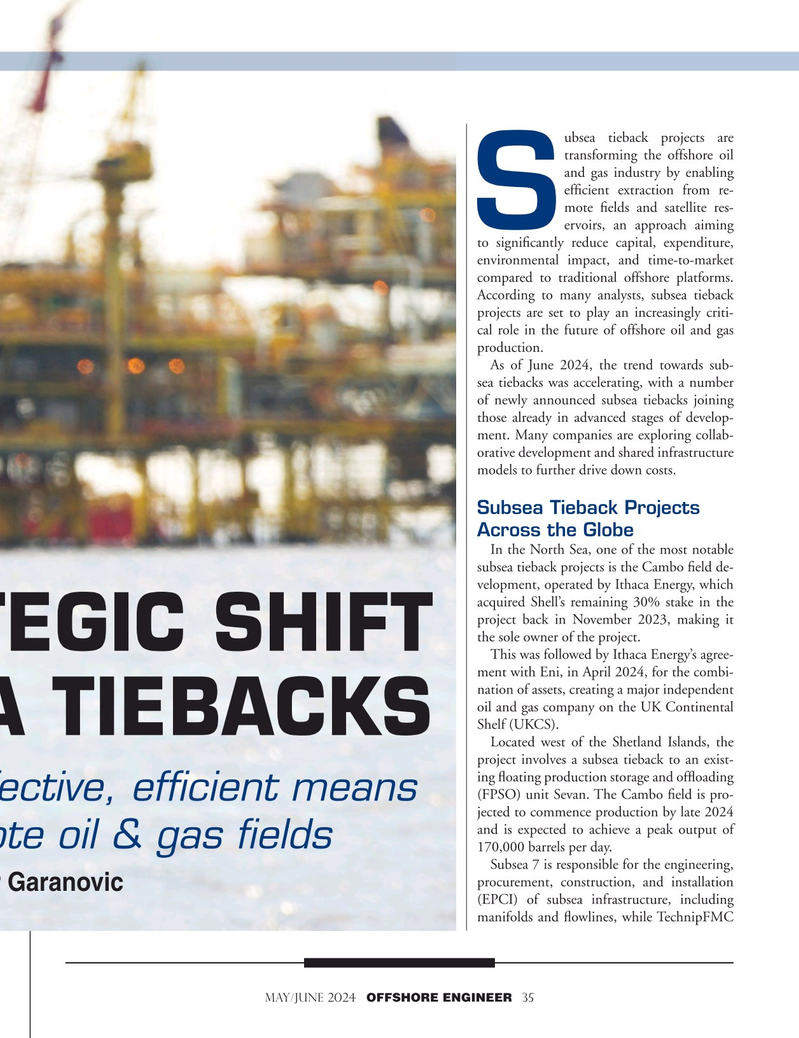
Page 35: of Offshore Engineer Magazine (May/Jun 2024)
Read this page in Pdf, Flash or Html5 edition of May/Jun 2024 Offshore Engineer Magazine
ubsea tieback projects are transforming the offshore oil and gas industry by enabling effcient extraction from re- mote felds and satellite res-
S ervoirs, an approach aiming to signifcantly reduce capital, expenditure, environmental impact, and time-to-market compared to traditional offshore platforms.
According to many analysts, subsea tieback projects are set to play an increasingly criti- cal role in the future of offshore oil and gas production.
As of June 2024, the trend towards sub- sea tiebacks was accelerating, with a number of newly announced subsea tiebacks joining those already in advanced stages of develop- ment. Many companies are exploring collab- orative development and shared infrastructure models to further drive down costs.
Subsea Tieback Projects
Across the Globe
In the North Sea, one of the most notable subsea tieback projects is the Cambo feld de- velopment, operated by Ithaca Energy, which acquired Shell’s remaining 30% stake in the project back in November 2023, making it the sole owner of the project.
THE STRATEGIC SHIFT
This was followed by Ithaca Energy’s agree- ment with Eni, in April 2024, for the combi- nation of assets, creating a major independent oil and gas company on the UK Continental
Shelf (UKCS).
TO SUBSEA TIEBACKS
Located west of the Shetland Islands, the project involves a subsea tieback to an exist- ing foating production storage and offoading (FPSO) unit Sevan. The Cambo feld is pro-
A potentially cost-effective, efficient means jected to commence production by late 2024 and is expected to achieve a peak output of to develop remote oil & gas fields 170,000 barrels per day.
Subsea 7 is responsible for the engineering, procurement, construction, and installation
By Amir Garanovic (EPCI) of subsea infrastructure, including manifolds and fowlines, while TechnipFMC
MAy/june 2024 OFFSHORE ENGINEER 35

 34
34

 36
36